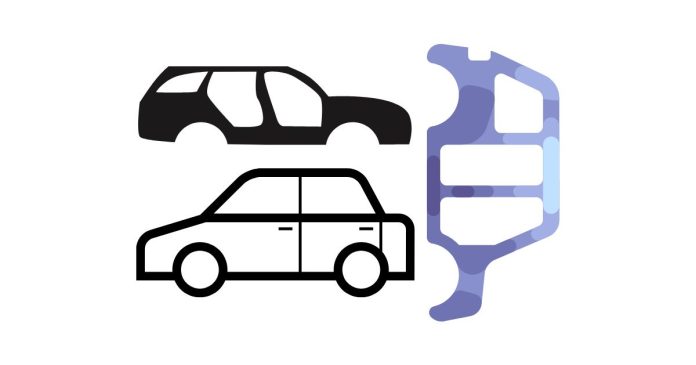When you hear the term “A-frame” in reference to a car, you might wonder what exactly it means. The A-frame is an essential part of a vehicle’s structure, but its specific function and importance can sometimes be unclear, especially for those who aren’t familiar with car mechanics. So, what is the “A-frame” of a car, and why is it so important?
In this blog post, we’ll break down what the A-frame is, how it fits into a car’s overall design, and why it’s crucial for vehicle performance and safety.
What Exactly is the A-Frame in a Car?
The A-frame (often referred to as the A-pillar) is a structural component of a car’s body, located on either side of the windshield. It forms part of the vehicle’s framework, providing support for the roof and aiding in the overall structural integrity of the car. The A-frame is typically made from strong materials such as steel or aluminum to withstand the forces acting on the car during driving.
The A-frame gets its name from its shape: it resembles the letter “A,” as it is angled from the car’s roof down to the body of the car near the front doors. It is positioned on either side of the windshield, helping to support the windshield itself and contributing to the overall structure that protects the cabin.
Why is the A-Frame Important?
The A-frame plays a critical role in vehicle safety and design. Here are some key reasons why it is so important:
Structural Support
The A-frame helps support the car’s roof and windshield. Without it, the structural integrity of the vehicle would be compromised. It also serves as a crucial component in the overall framework that helps maintain the shape of the car, especially during impacts or crashes.
Protection During Collisions
In the event of a crash, the A-frame contributes to the protection of the occupants. Its strength helps absorb the forces from a collision, particularly in a front-end crash, reducing the risk of the roof caving in or the windshield breaking.
Impact on Visibility and Design
The A-frame is important for visibility from the driver’s seat. Its design influences the amount of glass in the windshield, which affects how much the driver can see out of the car. Manufacturers often have to balance the A-frame’s strength with the need for good visibility, as the frame itself can sometimes create a “blind spot.”
Safety Features
In modern vehicles, the A-frame may also house important safety features such as airbags and side-impact beams. These additional components help to further protect the occupants in the event of an accident.
Types of A-Frames in Different Cars
While the A-frame is a standard feature in all cars, its design and composition can vary depending on the type of vehicle. For example:
- Sedans and Compact Cars: In smaller vehicles like sedans, the A-frame is generally thinner and designed to maximize visibility, as the roof structure isn’t as tall or heavy as in larger cars. These frames need to balance strength with the need for larger windows.
- SUVs and Trucks: In larger vehicles, the A-frame is often thicker and reinforced to provide additional support, as these vehicles have heavier roofs and are designed for more robust performance. The added strength helps ensure safety during rollover accidents or high-impact collisions.
- Sports Cars: For sports cars, the A-frame design may be optimized for performance, sometimes using lightweight but strong materials like carbon fiber or high-strength alloys to keep the car lightweight while still ensuring safety.
Challenges of the A-Frame Design
While the A-frame is essential for vehicle safety and structure, there are certain challenges that automakers face when designing it. Some of these include:
- Visibility Issues: One of the most common complaints about the A-frame is that it can obstruct the driver’s view, particularly at intersections or when turning. The width of the A-frame can create blind spots, which is why some newer models have been designed with slimmer A-frames or larger windows to improve visibility.
- Weight and Fuel Efficiency: A stronger, more reinforced A-frame adds weight to the vehicle, which can affect fuel efficiency and performance. Manufacturers have to strike a balance between creating a strong A-frame for safety while keeping the vehicle as lightweight and efficient as possible.
- Design Compromises: Car designers must balance the structural and safety benefits of a robust A-frame with aesthetic considerations. For example, sports car manufacturers may opt for a sleeker, more stylish design that compromises the width of the A-frame, all while maintaining safety standards.
The Role of the A-Frame in Car Safety
In summary, the “A-frame” of a car (or A-pillar) is a critical structural component that provides support to the roof and windshield while contributing to the vehicle’s overall safety and design. It helps protect the car’s occupants during collisions and plays a role in ensuring the car maintains its shape and integrity during everyday driving. While it may sometimes pose visibility challenges, manufacturers continue to innovate, designing A-frames that balance strength, safety, and visibility.
Next time you look at a car, take a moment to appreciate the A-frame — it’s much more than just a structural element; it’s a key part of what keeps you safe on the road.


